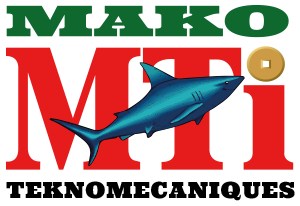The overhead crane market is unique in the way it delivers products in kit form. Euan Youdale speaks to Street Crane about its approach to this selling practice and rounds-up industry news.
Street Cranes, in the UK, has launched a new range of hoists: the ZX6 and ZX8. The company invested UK£1.5 million (US$2.19 million) in their development. They will be aimed at the successful kit crane export business that Street Crane has developed over the last decade.
The company produces up to 500 standard cranes a year at its factory in the UK. A further 2,500 kit form products are despatched globally every year to existing manufacturers, acting as distributors. The company has 43 partners around the world, including Canada, Thailand, India, Malaysia, China and the Middle East, as well as Northern America.
Andrew Pimblett, Street Crane managing director, says the new products are a standard engineered series built hoist, designed for the volume market. “Distributors take components from Street Crane and make their own cranes out of them.” About 90% of the kits are supplied with all the necessary components, excluding the main beam.
The new range offers a 25 tonne lifting capacity. It will be followed by the ZX10 in 2009, which will include two basic models. The 40 tonne version will be launched first, followed by the 50 tonne model later in the year.
Safe load
Advantages of the new ZX6 and ZX8 are that they can fit into a small box for easy transport and they boast features that similar products do not have. The hoist brake is situated on the gear box output shaft. This means, says Pimblett, that a break can occur in the motor or other shaft and you would not drop the load. In addition, the hoist gears are submerged in oil. Open geared products are cheaper to make, Pimblett says, “but are not that good a design.”
The machines are available in a huge number of combinations, incorporating, for example, safe working speed, duty and lifting height. There are many advantages to the kits, says Pimblett, one of them being that that they are supplied with plug-in electrics, meaning there is no need to employ so many electricians on site.
The unique feature of the Street Crane package is that the company promises not to compete with the distributor in their own market, allowing them to take advantage of the after-sales business.
“We work entirely through our partners, which is a very attractive thing. They are not only selling the same product, their biggest competitor is not going to pick up the parts and service. They sell under the Street brand and the distributor brand. It’s been very successful,” says Pimblett. “The point is, we are in a post-industrial period in the Western world. If we were to open a crane factory in the US, for instance, there would not be the return on capital, so better to pick a partner with those facilities and take a share in the profit. We have grown very fast on that strategy.”
New strategy
About 80% of Street Crane’s output is exported but only a very small percentage of that is made up of standard complete cranes and they are mainly large capacity special cranes that are beyond the manufacturing capabilities of some of Street’s partners.
The company says it has about 40% of the UK market and realised it could not keep growing by exporting in its traditional way, so adopted the component export strategy.
The overhead crane market in China is about 120,000 units every year, says Pimblett. That compares to about 1,000 units in the UK. It means that capturing a small percentage of the Chinese, or one of the other emerging markets, has the same affect as gaining 40% of UK sales. “There is one market for cheap, local, more primitive hoists and another market for more advanced hoists. So when we go to developing countries – rapidly growing markets with huge opportunities – we do not need 50% of the market share, if we get 5% that is serious business.”
Company sales for the 2008/2009 financial year are forecast to be comfortably ahead of the previous year with growth of 35 to 40%. To cater for this growth the company is investing in a new factory extension, which will see the workshops increased by 30%.
Looking ahead, Pimblett says the UK market seems to be quietening down and there is a possible drop-off in standard crane sales. The prospects for kit cranes, however, are still very positive, he adds, as is the business directed at large scales projects, such as power plants, which tend to run their course, even through a recession.

